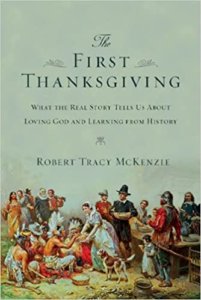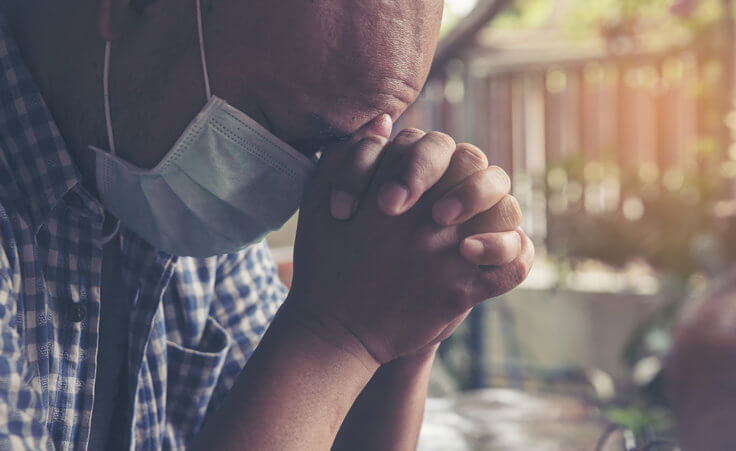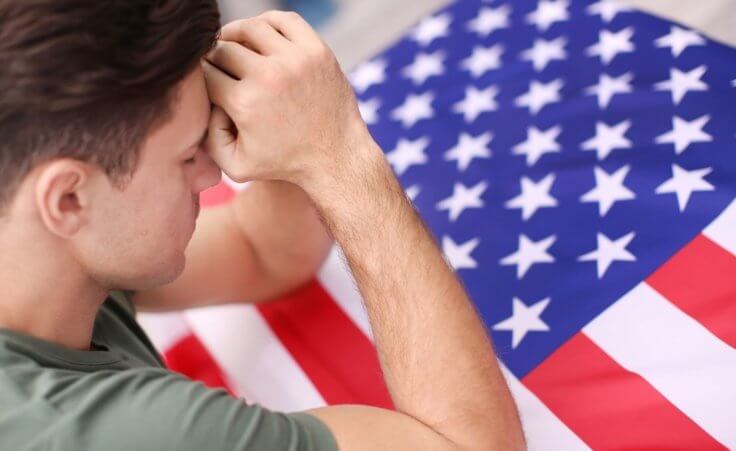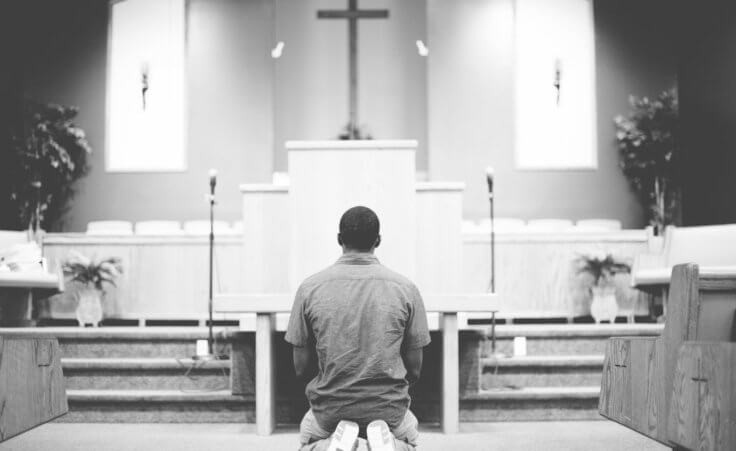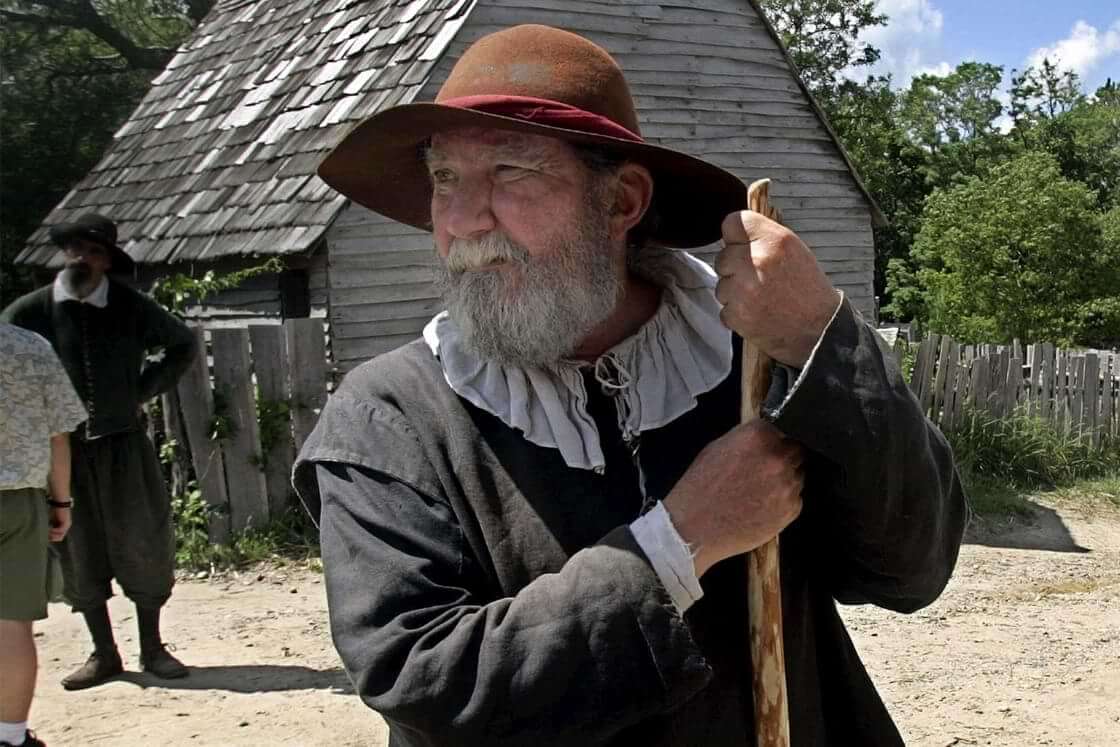
FILE -- In this Tuesday, June 27, 2006 file photo a 17th century costumed role player, who called himself Samuel Fuller, stands on a path in the Pilgrim Village at Plimoth Plantation, in Plymouth, Mass., where visitors can get a glimpse into the world of the pilgrims in 1627. (AP Photo/Chitose Suzuki, File)
In embracing the myths about the first Thanksgiving, we can miss the lessons the Pilgrims have to teach us.
Robert Tracy McKenzie, a history professor at Wheaton College, examines the historical record and debunks the myths in The First Thanksgiving: What the Real Story Tells Us About Loving God and Learning from History.
McKenzie notes that only one firsthand account of the celebration has survived, in a letter written by Edward Winslow, an assistant to Plymouth Colony Governor William Bradford. A little more than one hundred words long, the letter contains few details other than that the Pilgrims furnished fowl and the Wampanoag tribesmen brought venison.
The picture that emerges of that feast in 1621 differs in several respects from the way Americans imagine and celebrate it today.
What really happened at the first Thanksgiving
Rather than the fourth Thursday in November, the celebration likely occurred in late September or early October, after the harvest.
There’s no evidence turkey was on the menu. Winslow’s account says only that four of the Pilgrims “in one day killed as much fowl as, with a little help beside, served the company almost a week.” Although turkeys were plentiful in the area, McKenzie writes, “It is just as conceivable that the Pilgrims dined on ducks or geese—or even swans,” which were considered a delicacy.
They also could have eaten fish, shellfish, or eels. “The ‘trimmings,’ which were less plentiful, would have included Indian corn (ground and used to make porridge or ‘succotash’) as well as what the Pilgrims called ‘sallet herbs’: vegetables from their gardens such as collard greens, parsnips, turnips, carrots, onions, spinach, and cabbage,” McKenzie speculates.
He considers it a mistake to view the feast as a “multicultural celebration” because of a history of mutual distrust. “It was likely tense at best,” McKenzie writes, and the Wampanoag may have shown up uninvited.
Rather than sitting around tables, as legend would have it, everyone likely sat on the ground outside. The buildings in Plymouth were tiny, with few tables and chairs.
And the Pilgrims normally didn’t dress in black and white. They were more apt to wear bright clothing, and common folk rarely wore buckles on their hats, belts, and shoes in the 1620s.
The Pilgrims didn’t envision Thanksgiving as an annual holiday. Instead, they believed that, on occasion, Scripture allowed for days of thanksgiving. They opposed the numerous holy days imposed by the Catholic and Anglican churches and believed that only God could establish religious holidays.
Hijacking the Pilgrims
In embellishing the facts, McKenzie writes that we also have shown a disturbing tendency “to graft the Pilgrims and the First Thanksgiving onto the larger story of America” and enlist “them in causes they wouldn’t have supported.”
“We have distorted the Pilgrims’ story, clothing them with modern American values and making the future United States—not heaven—their true promised land,” he adds.
For example:
- Theodore Roosevelt implied the Pilgrims would have favored regulating Big Business.
- Look magazine called the Pilgrims “dissidents” and “commune-builders” during the turbulent 1960s.
- Life magazine said in a Thanksgiving issue in World War II that the Pilgrims “waged hard, offensive wars” while remembering that “victory comes from God.”
- Lyndon Johnson appealed to “the principles that the early Pilgrims forged” in explaining the Vietnam War.
- Bill Clinton compared the Pilgrims sitting down with the Wampanoag to efforts for a “comprehensive peace in the Middle East.”
McKenzie attempts to set the record straight: “We are ‘strangers’ and ‘aliens’ here on earth—yes, even in the United States—and this means, in turn, that we should expect the values of our host country to differ from those of our homeland,” he writes.
We have forgotten the true meaning of “pilgrim”—a person on a sacred journey in a foreign land—and, McKenzie notes, confused patriotism with piety.
The Pilgrims never would have made that sort of mistake.
